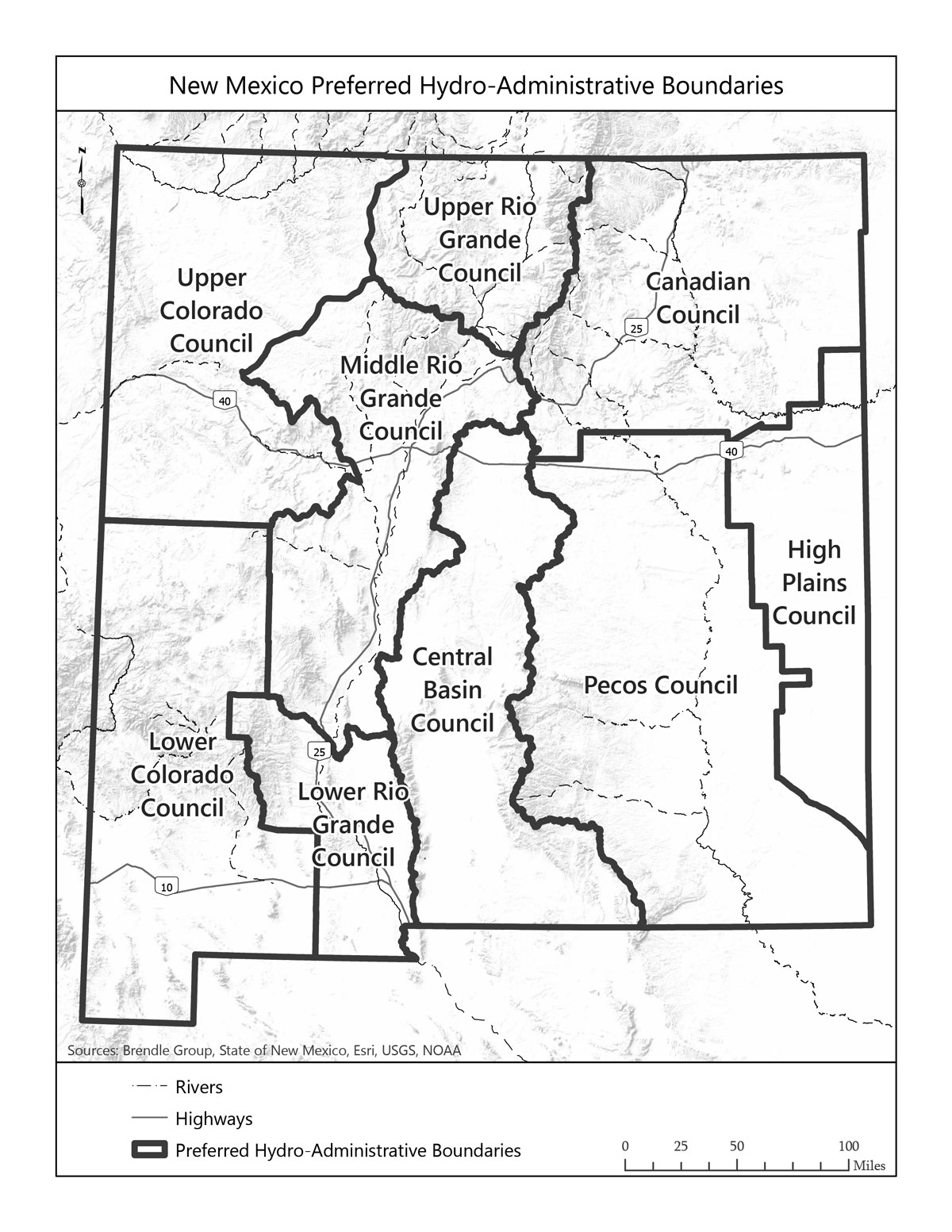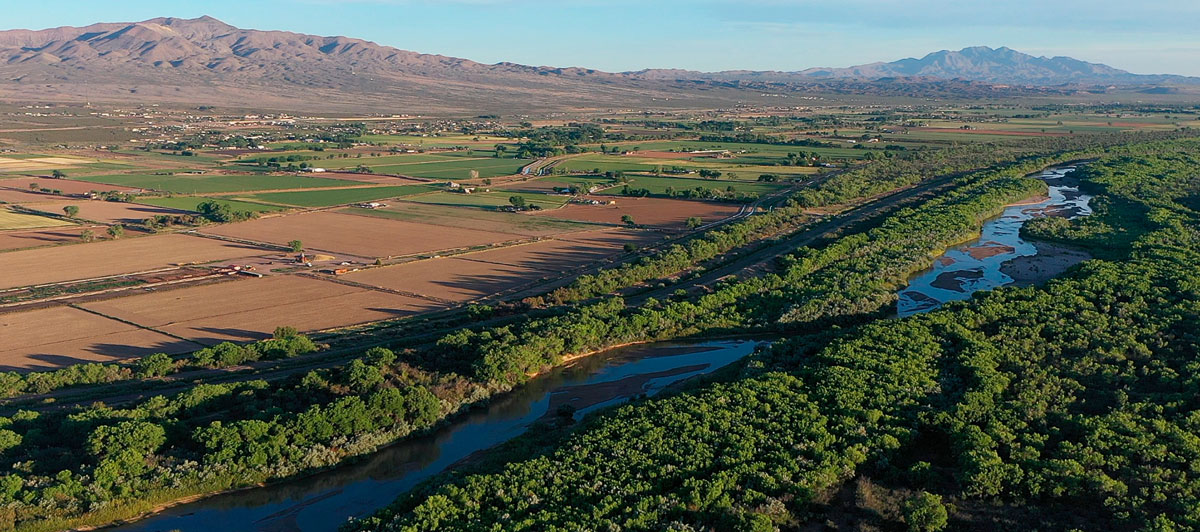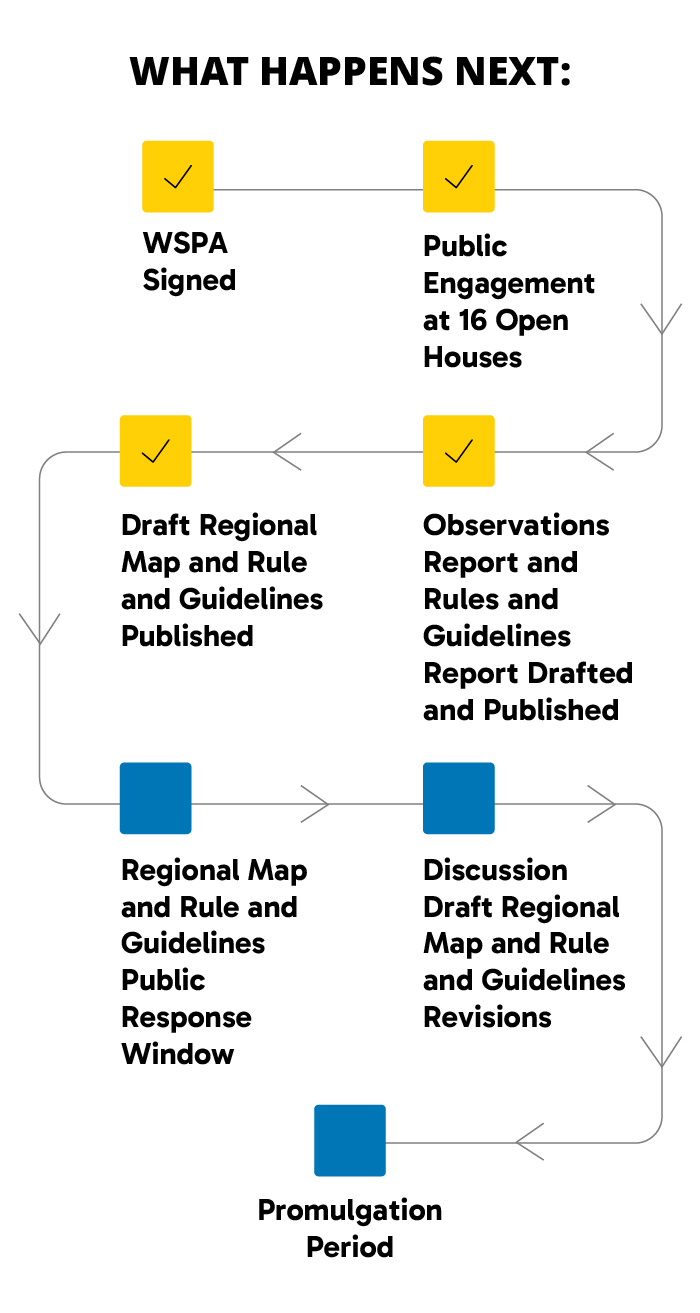From ‘Just a Bill’ to a Law, Fully Enacted
Here's What's New in New Mexico's Regional Water Planning Process
Feb / 2025

We all remember that eager, cautiously hopeful bill sitting there on Capitol Hill. But here’s something that classic Schoolhouse Rock jingle doesn’t tell us: A bill’s journey rarely ends with a signature from the chief executive. There’s a whole lot left to do to get that new law enacted.
When New Mexico Gov. Michelle Lujan Grisham inked the Water Security Planning Act in 2023, for example, it triggered a multiyear, multistage process that, when all is said and done, will include multiple rounds of public engagement, rule-drafting, map-making, revisions upon revisions, and, finally, the official decree for how regional water planning should proceed in New Mexico.
That intricate process has become a passion project for two Interstate Stream Commission staffers. For the past two years, Andrew Erdmann, ISC’s water planning program manager, and Sara Fox, one of its senior water planners, have led the charge, organizing open houses across the state and working to distill public comments and turn them into ways to incentivize and regulate water planning.
And now, with the publishing of a proposed regional map and the Discussion Draft Rule and Guidelines documents, Erdmann and Fox are excited to kick off the next phase.
It’s a task they know is both time-sensitive and consequential to New Mexico’s water-scarce future. (Scientists predict the state’s surface water and groundwater resources will see a 25 percent reduction in supply over the next 50 years, mostly due to a warming climate.)
“The last water-planning statute took effect in 1987,” Erdmann says. “If the WSPA is in place for 40 years, too, the effects we're expecting to see relative to climate change and changes in how much water is available are pretty significant. So, it's critically important that we get this right.”

‘Playing With the Same Water in the Same Room’
One of the most critical tasks, and the one about which folks have the strongest opinions, is to redraw the boundaries of the state’s water regions. Since 1987, the state has been divided into 16 regions. ISC’s new proposed map nearly cuts that number in half.
During public engagement, New Mexicans strongly advocated for boundaries based on hydrology — that is, based on where water flows. The newly proposed map reflects that preference. If enacted as such, it will align New Mexico with its neighboring states, Fox says, many of whom have drawn their lines based on hydrology.
“We want to get people who play with the same water in the same room,” Fox says. “It doesn’t really behoove us to have a lot of competing councils when they’re all in the same watershed together.”
That’s especially important, she adds, in regions like the Rio Grande corridor. On the 2016 map, the corridor is divided into four regions, which made planning challenging, because some communities were divided.
This next phase of the process offers New Mexicans a chance to comment on the proposed regional boundaries and Rule and Guidelines via a survey. Erdmann and Fox say they’re expecting a certain level of excitement — and a bit of frustration as well. They’re holding out for compromise.
“There’s a cloud and a silver lining when you slice something up. That’s inevitable,” Erdmann says. “What we want is for people to see that we’re listening, and we’re working hard to make this as successful as it can be. And of course, the most important thing is for us all to eventually move past the discussion of how we do it and actually start doing it.”


Promulgation: When ‘The Train Comes In’
Beyond this phase of engagement, the only thing standing between New Mexicans and the “actually doing it” phase of regional planning is a hyper-important, hyper-regulated phase known as promulgation.
During this process, a hearing is held in which people can speak in favor of or against the Rule and/or the regional map. Changes — including potentially drastic ones — can take place during the process, so Erdmann says he’s hoping the team gets it right during the current, less formal discussion draft.
“It’s not that we don’t want there to be changes, but I’m hoping we do a really good job of engaging folks now when we have a longer lead time to think through changes,” he says. “By the time we get to promulgation, it’ll all move pretty quickly until the train comes in.”
And so, not for the last time in this multiyear process, Erdmann and Fox are hoping New Mexicans from Taos to T or C, from Carlsbad to Clayton, review ISC’s work and make their voices heard. Because just like that hopeful bill of yore, the New Mexico Water Security Planning Act will be nothing without the input of the folks back home.
To get involved in making regional water planning work all across the Land of Enchantment, visit the Get Involved page.


